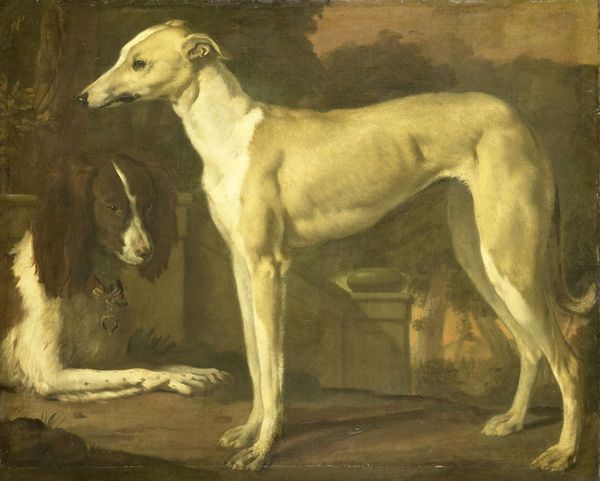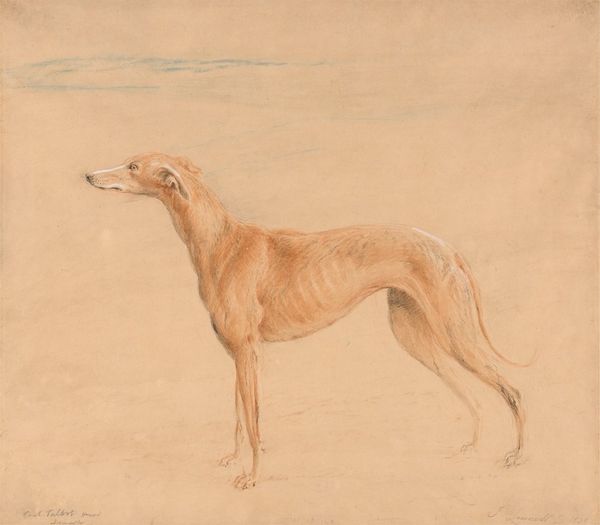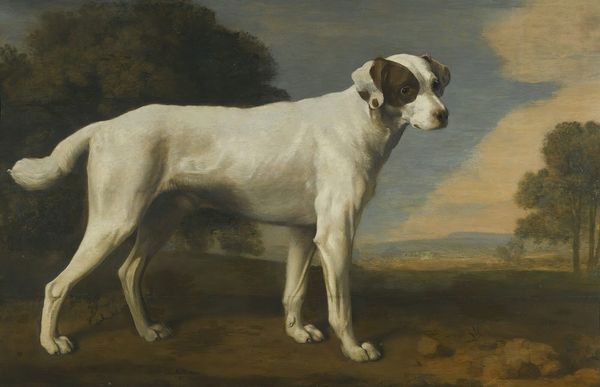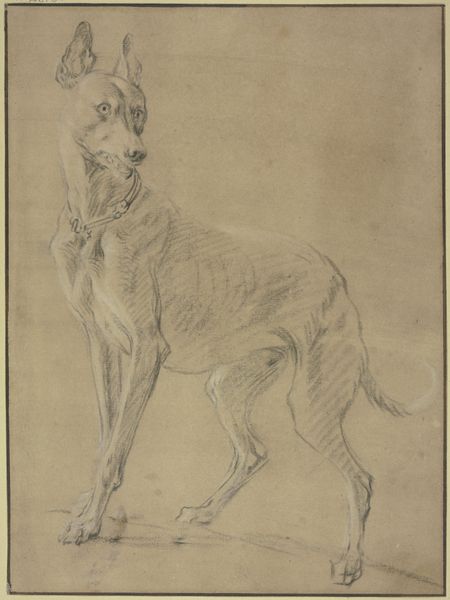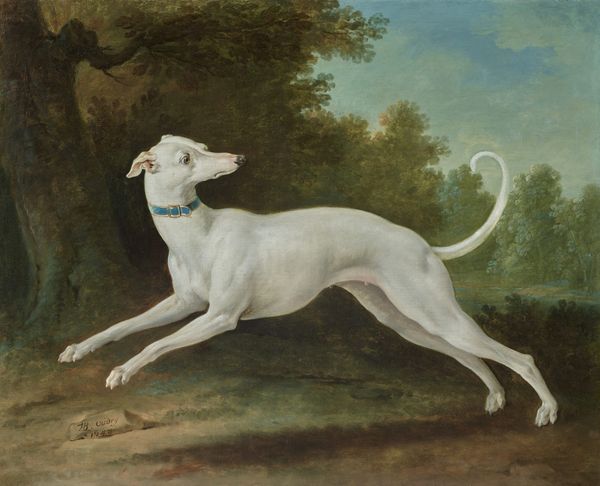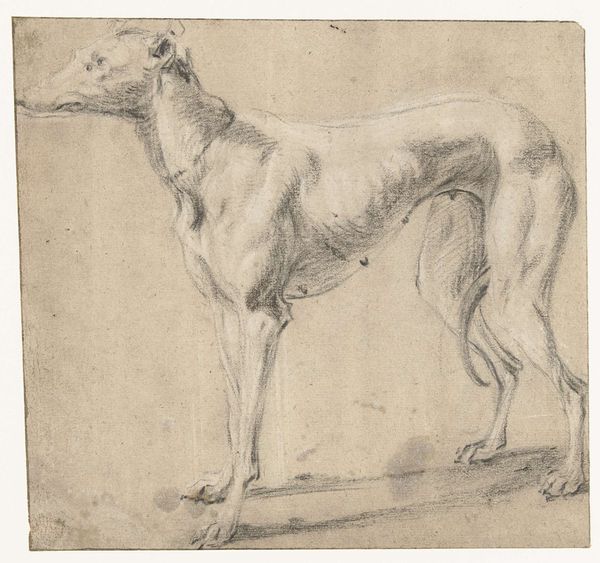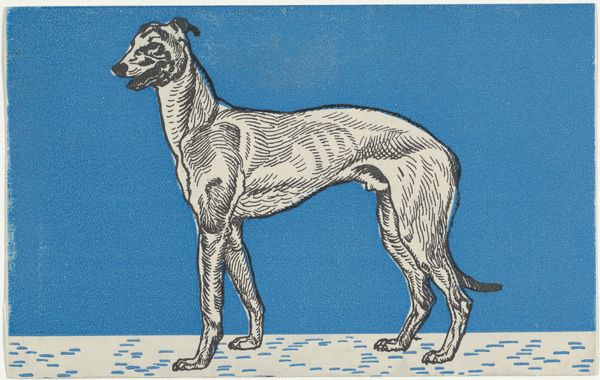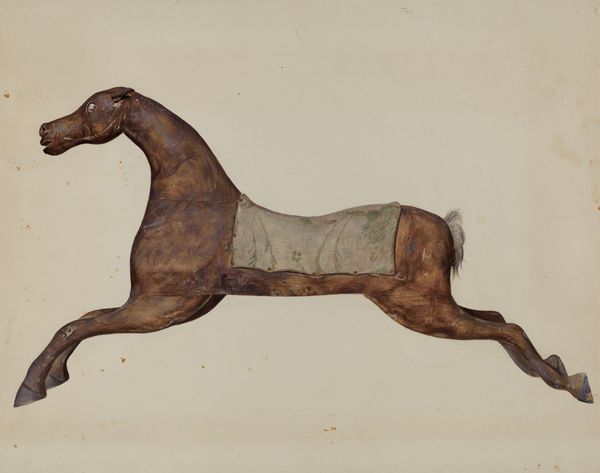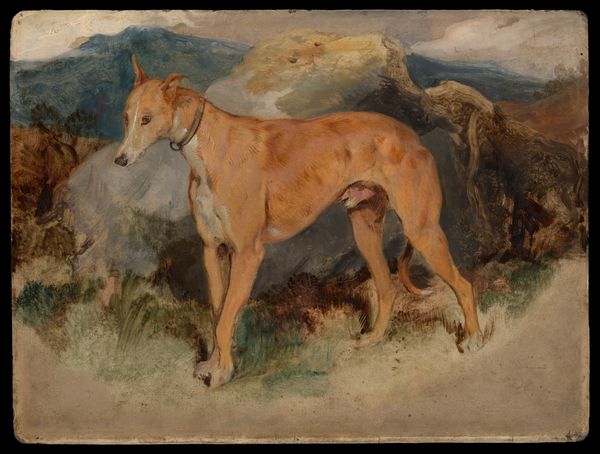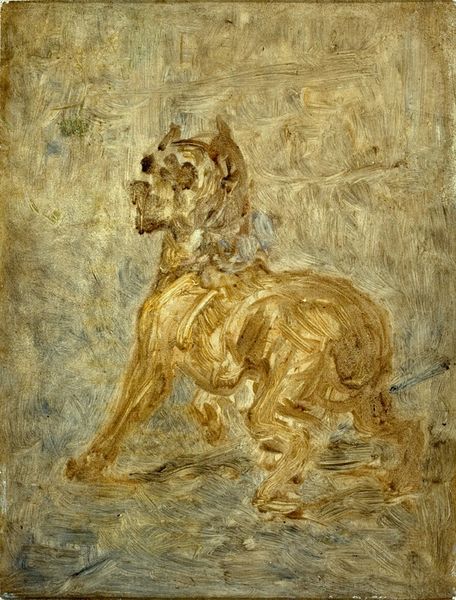
Copyright: Public domain
Editor: Here we have Giovanni Domenico Tiepolo's "Greyhound" from 1793, an oil painting depicting exactly that, a greyhound. It strikes me as quite somber, with the muted colours and slightly melancholy air of the dog. How do you interpret this work? Curator: It's interesting you pick up on that somber quality. Consider Tiepolo's context: painting this at the tail end of the Baroque period, on the cusp of major social and political upheaval. A dog, particularly a greyhound, was often a symbol of fidelity and aristocracy. Do you think this portrait might subtly critique those established social orders, showing them as perhaps worn or tired? Editor: That's a compelling idea. I hadn’t considered the dog as a stand-in for something larger, but I can see how it speaks to social structures. The dog doesn’t exactly look vigorous. Curator: Precisely. Notice the muted tones, almost a monochrome palette. Tiepolo might be using that to drain the traditional symbolism of its vitality. The greyhound isn't romping, it's standing, almost waiting. What might it be waiting for? Editor: Perhaps waiting for the old order to collapse? The French Revolution was happening around that time. Could that be casting a shadow over this painting? Curator: It's certainly possible. Art rarely exists in a vacuum. And considering Tiepolo's later works often engaged with contemporary social issues, it's reasonable to read this Greyhound as a commentary on the fragility of power and the shifting sands of European society. Editor: I never would have viewed this seemingly simple portrait in this way. Thanks to our conversation, I'm leaving with fresh knowledge about it. Curator: Indeed! It’s remarkable how much history and social commentary can be packed into what appears to be a simple image.
Comments
No comments
Be the first to comment and join the conversation on the ultimate creative platform.
